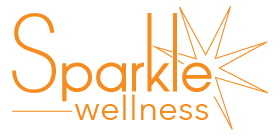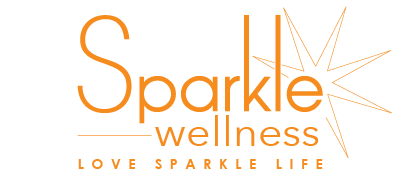Adapt Your Daily Workout To Manage Aches & Pains


Written by Yu Ming O’Neil
co-founder of Sparkle Wellness
We get it, you’re in a groove with your workouts and you don’t want to stop your progress but you are also experiencing some serious soreness. Do you just push through?
The muscle ache you typically get 24-48 hours after a workout is called delayed onset muscle soreness (DOMS). It is basically your body's inflammatory response due to a breakdown in muscle tissue.
Usually, DOMS happens when you’ve tried a new (and more intense) workout, or going back to the gym after some time off, or lifting more weight or doing more reps than before. Essentially your muscles are moving in a way you’re not used to.
The micro-tears that occur during a workout is the only way your muscles can produce newer cells to repair and protect them, that results in bigger muscle mass. As you can see, DOMS is not necessarily a bad thing, in fact it’s a good thing.
However, how do you keep working out more frequently and consistently if you are facing aches and pains from DOMS?
Tips for Managing Post-Workout Soreness
Consume caffeine before exercise
This study shows that drinking up to two cups of coffee before a workout can drastically reduce DOMS by 48 percent.
Foam rolling
After intense exercise, foam rolling can decrease muscle fatigue and soreness, according to this research. By rolling out your muscles, these movements can relieve tension in the connective tissue of your muscles.
Post-workout massage
If you have the resources, a massage after experiencing DOMS can help reduce muscle pain, as this 2014 study found. It’s a good idea to schedule a massage soon after a workout.
Add recovery workouts
In 2012, this research found that women who tagged a low-to-moderate intensity cycling session to an intense workout for 20 minutes experienced a reduction in DOMS.
Additional Ways to Reduce Post-Workout Soreness
We would say, you don’t need to go hard on every single workout to get results and taking a rest day or even two is really okay and even necessary for recovery.
Map out a reasonable training routine with manageable goals rather than overextending yourself. Mix up strength training and high-intensity workouts with yoga, walking, and swimming.
Don’t fall into the trap of thinking “no pain, no gain” means you’ve had a good workout. Moderately increase the intensity of your workouts so that your body can slowly adjust and get stronger over time. A good way to enhance results over time is to include Muscle Boost, which has BODYBALANCE collagen peptides, that help muscles get stronger when paired with resistance training.
Including an oral magnesium supplement in your post-workout regimen can help reduce inflammation and relax muscles and nerves.
Managing Other Post-Workout Aches & Pains
While there are a plethora of sports-related injuries that can happen, the most common strains are related to the overuse of tendons and ligaments. This leads to collagen being broken down at a faster rate than it can be made.
Common soft tissue “overuse” injuries that manifest as aching burning, or tenderness include:
- Achilles tendon pain
- Ankle sprains
- Plantar fasciitis or heel pain
- Patella tendon pain (tendon that connects your kneecap to your shin bone)
- ACL (anterior cruciate ligament) tears
- IT band (the band that connects your hip to knee) issues, also called hip bursitis
Our Joint Boost product has TENDOFORTE collagen peptides that stimulate the cells in tendons and ligaments to produce new collagen matrix proteins, which then help you train at a high level of intensity while minimizing wear and tear.
For example, a six-month study done by the Australian Institute of Sport showed that athletes who had long-term chronic Achilles tendinopathy were able to return to training in three months after consuming TENDOFORTE every day. These participants were also able to keep running for the remainder of the trial period.
Another research study examined how TENDOFORTE reduced ankle sprains and instability. After six months of TENDOFORTE supplementation, participants experienced an increase in ankle stability, a reduction in ankle sprains, and also reduction the re-injury rate three months after the trial period.
*We do not recommend using any of our products to treat severe injuries or pain. Always consult a medical practitioner.
Also in Most Recent

Magnesium Before Bed: Can it help with sleep?

New Year, Better Rest: Why You Should Get More Sleep in 2024



